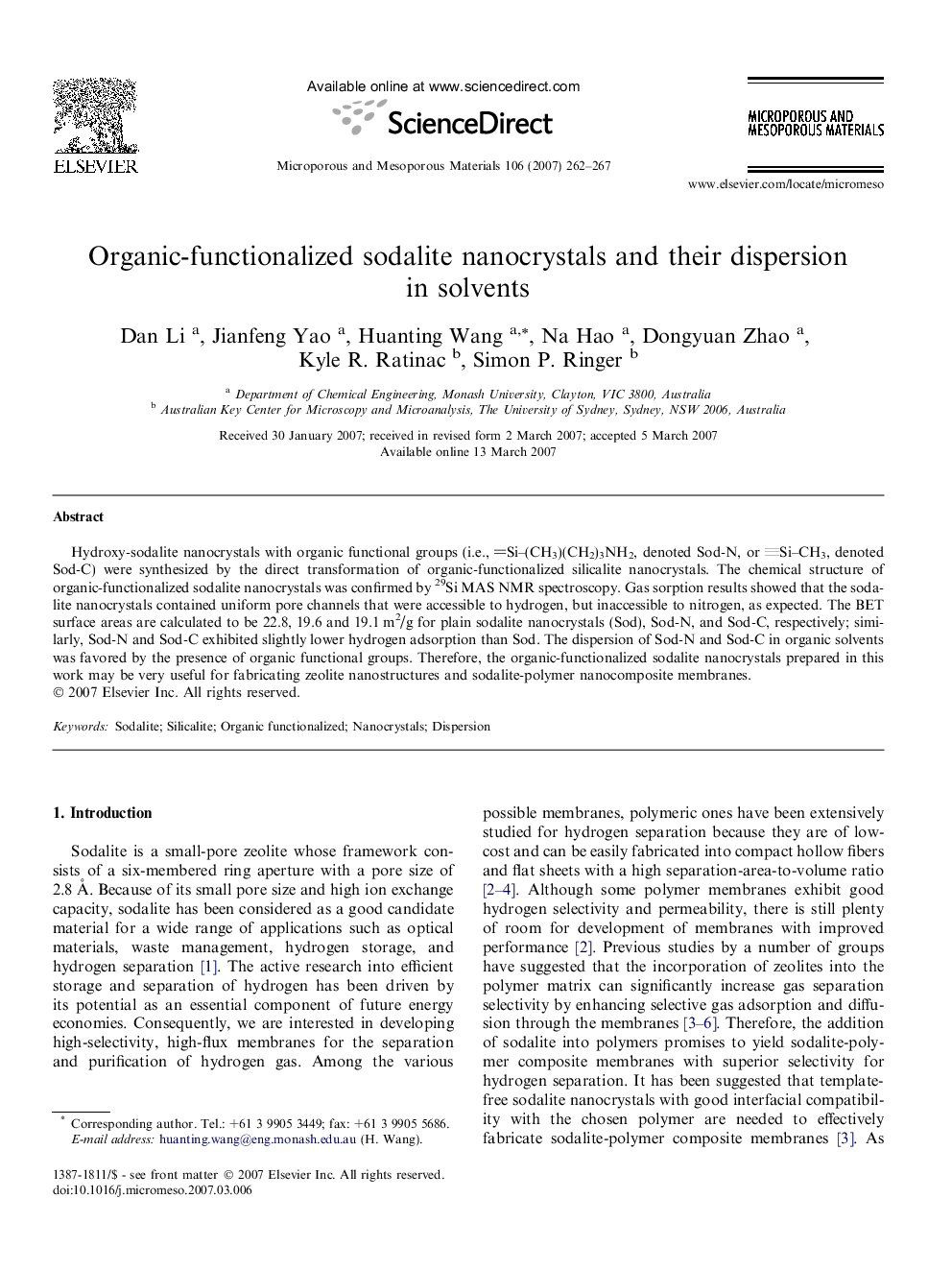| Article ID | Journal | Published Year | Pages | File Type |
|---|---|---|---|---|
| 76786 | Microporous and Mesoporous Materials | 2007 | 6 Pages |
Hydroxy-sodalite nanocrystals with organic functional groups (i.e., Si–(CH3)(CH2)3NH2, denoted Sod-N, or Si–CH3, denoted Sod-C) were synthesized by the direct transformation of organic-functionalized silicalite nanocrystals. The chemical structure of organic-functionalized sodalite nanocrystals was confirmed by 29Si MAS NMR spectroscopy. Gas sorption results showed that the sodalite nanocrystals contained uniform pore channels that were accessible to hydrogen, but inaccessible to nitrogen, as expected. The BET surface areas are calculated to be 22.8, 19.6 and 19.1 m2/g for plain sodalite nanocrystals (Sod), Sod-N, and Sod-C, respectively; similarly, Sod-N and Sod-C exhibited slightly lower hydrogen adsorption than Sod. The dispersion of Sod-N and Sod-C in organic solvents was favored by the presence of organic functional groups. Therefore, the organic-functionalized sodalite nanocrystals prepared in this work may be very useful for fabricating zeolite nanostructures and sodalite-polymer nanocomposite membranes.
